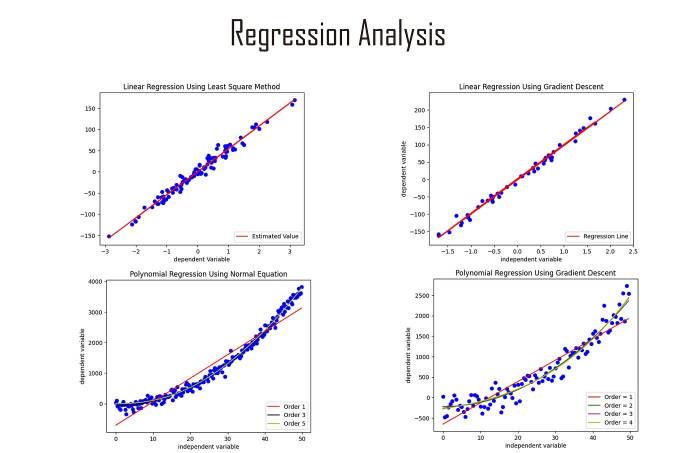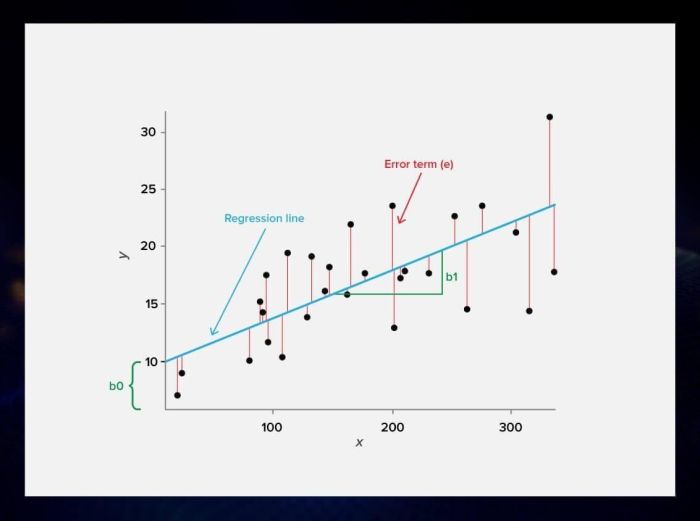Forecasting technique that uses explanatory variables to predict future demand. – Forecasting technique that uses variables to predict future demand. has emerged as a powerful tool for businesses and organizations seeking to gain insights into future trends and make informed decisions. This comprehensive guide delves into the intricacies of this technique, exploring its concepts, applications, and best practices.
By leveraging variables, forecasting models can capture the underlying relationships between historical data and future demand, enabling more accurate and reliable predictions. This guide will equip readers with the knowledge and skills necessary to effectively implement forecasting techniques using variables, empowering them to make data-driven decisions and achieve better business outcomes.
Forecasting Technique Overview

Forecasting techniques that use variables are powerful tools for predicting future demand. These techniques leverage historical data to identify relationships between demand and various factors that influence it, such as economic indicators, marketing campaigns, or weather patterns. By incorporating these variables into the forecasting model, businesses can improve the accuracy and reliability of their forecasts.
Examples of forecasting techniques that use variables include regression analysis, time series analysis with exogenous variables, and machine learning algorithms such as decision trees and random forests.
The main advantage of using variables in forecasting is that it allows businesses to capture the impact of external factors on demand. This leads to more accurate and reliable forecasts, which can be used to make better decisions about production, inventory, and marketing.
However, there are also some limitations to using variables in forecasting. One limitation is that it can be difficult to identify all of the relevant variables that influence demand. Another limitation is that the relationship between demand and variables can change over time, which can make it difficult to build forecasting models that are accurate over the long term.
Variable Selection and Data Preparation

The process of selecting relevant variables for forecasting is crucial to the success of the forecasting model. The variables should be relevant to the demand being forecast and should have a strong relationship with demand.
There are several methods for selecting variables, including:
- Domain knowledge: Using the knowledge and experience of experts in the field to identify relevant variables.
- Data exploration: Using statistical techniques to explore the data and identify variables that are correlated with demand.
- Variable selection algorithms: Using machine learning algorithms to automatically select the most relevant variables.
Once the variables have been selected, the data must be prepared for modeling. This includes handling missing data, outliers, and transforming and scaling the variables to improve model performance.
Missing data can be handled by imputing the missing values using a variety of methods, such as mean imputation or multiple imputation.
Outliers can be handled by removing them from the data set or by transforming the data to reduce their impact.
Transforming and scaling the variables can improve model performance by making the variables more normally distributed and by reducing the impact of outliers.
Model Building and Evaluation

Once the data has been prepared, the forecasting model can be built. The choice of forecasting model depends on the nature of the data and the desired level of accuracy.
Some of the most common forecasting models include:
- Linear regression: A simple and widely used forecasting model that assumes a linear relationship between demand and the variables.
- Time series analysis with exogenous variables: A forecasting model that extends traditional time series analysis by incorporating variables.
- Machine learning algorithms: A variety of machine learning algorithms can be used for forecasting, such as decision trees, random forests, and neural networks.
Once the forecasting model has been built, it must be evaluated to assess its accuracy. The most common model evaluation metrics include:
- Mean absolute error (MAE): The average absolute difference between the forecast and the actual demand.
- Mean squared error (MSE): The average squared difference between the forecast and the actual demand.
- Root mean squared error (RMSE): The square root of the MSE.
The model should be selected based on its accuracy and its ability to generalize to new data.
FAQ Explained: Forecasting Technique That Uses Explanatory Variables To Predict Future Demand.
What are the key advantages of using variables in forecasting?
variables enhance the accuracy and reliability of forecasts by capturing the underlying relationships between historical data and future demand. They allow forecasters to incorporate external factors and market dynamics into their models, leading to more informed predictions.
How do I select the most relevant variables for my forecasting model?
Variable selection is crucial for effective forecasting. Consider factors such as correlation with the target variable, data availability, and theoretical relevance. Utilize statistical techniques like correlation analysis and stepwise regression to identify the most influential variables.
What are some common challenges in implementing forecasting techniques using variables?
Data quality and availability, model complexity, and the need for domain expertise are common challenges. Ensure data integrity, carefully balance model complexity with interpretability, and seek guidance from experts in the relevant field.